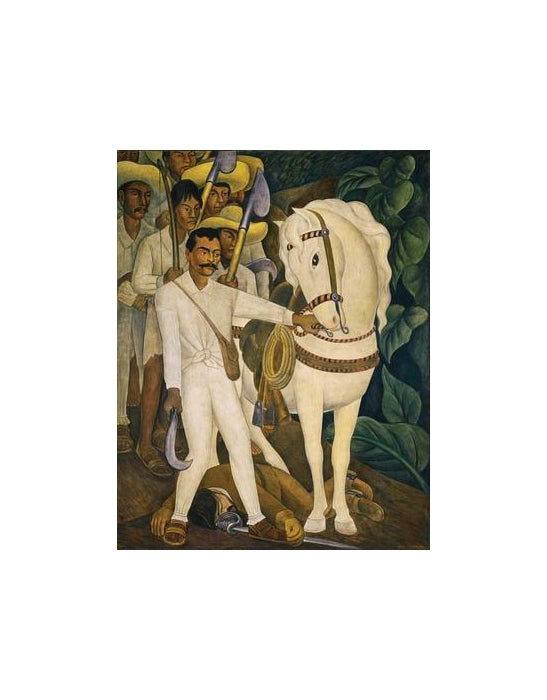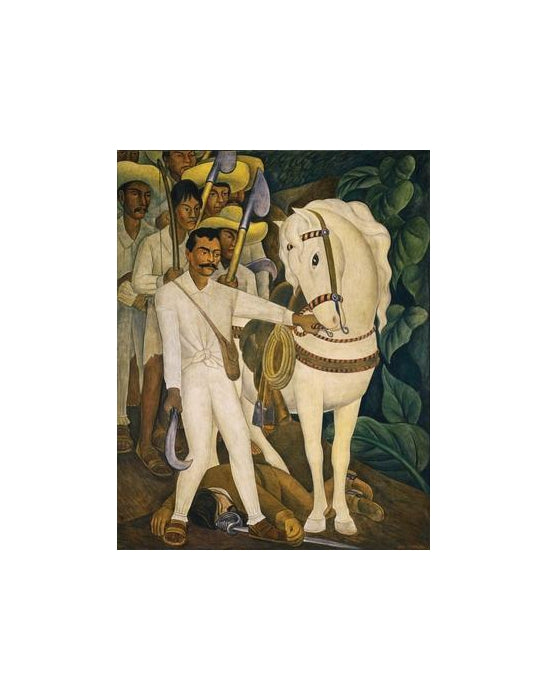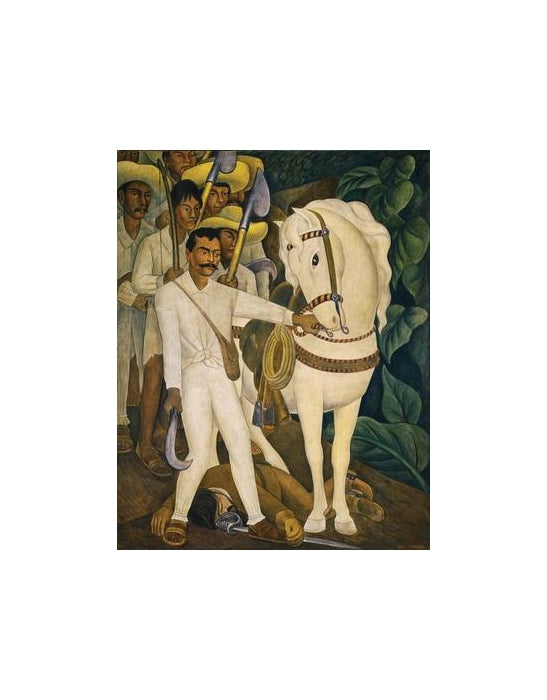Diego Rivera: Murals for the Museum of Modern Art
Diego Rivera: Murals for the Museum of Modern Art
In 1931, Diego Rivera was the subject of The Museum of Modern Art's second monographic exhibition, which set new attendance records in its five-week run.
The Museum brought Rivera to New York six weeks before the show's opening and gave him on-site studio space. There he produced five "portable murals" --large blocks of frescoed plaster, slaked lime, and wood that feature bold images drawn from Mexican subject matter and address themes of revolution and class inequity. After the opening, to great publicity, Rivera added three more murals, now taking on New York subjects through monumental images of the urban working class and the city during the Great Depression.
Published in conjunction with an exhibition that brings together key works made for Rivera's 1931 show, this catalogue casts the artist as a highly cosmopolitan figure who traveled between Russia, Mexico, and the United States and examines the intersection of artmaking and radical politics in the 1930s. Illustrated with reproductions of each panel as well as related paintings, drawings, prints, and documentary photographs, the book's essays investigate the international politics of muralism, Rivera's history with MoMA, the iconography of the portable murals, and technical aspects of the artist's working process.
Diego Rivera (1886-1957) was a central figure in the development of Mexican muralism, an ambitious public art initiative intended to relay Mexico's ideals after the Revolution (1910-1920). A highly cosmopolitan artist, Rivera had spent many years in Europe before returning to Mexico in 1921, and in 1927 he traveled to the Soviet Union where he met Alfred Barr, the soon-to-be founding director of The Museum of Modern Art, New York. Rivera's artistic celebrity benefitted from major commissions in the United States, including murals for the Pacific Stock Exchange, the California School of Fine Arts in San Francisco, MoMA, and the Detroit Institute of Arts. By the 1930s, he enjoyed an unrivaled status at the center of international debates about public art and politics.
Binding Type: Hardcover
Author: Diego Rivera, Leah Dickerman (Editor), Anna Indych-Lopez (Text by (Art/Photo Books))
Published: 11/30/2011
Publisher: Museum of Modern Art
ISBN: 9780870708176
Pages: 147
Weight: 2.00lbs
Size: 10.70h x 9.30w x 0.80d
- Description
- Dimensions
- Financing
- Reviews
- share
-
In 1931, Diego Rivera was the subject of The Museum of Modern Art's second monographic exhibition, which set new attendance records in its five-week run.
The Museum brought Rivera to New York six weeks before the show's opening and gave him on-site studio space. There he produced five "portable murals" --large blocks of frescoed plaster, slaked lime, and wood that feature bold images drawn from Mexican subject matter and address themes of revolution and class inequity. After the opening, to great publicity, Rivera added three more murals, now taking on New York subjects through monumental images of the urban working class and the city during the Great Depression.
Published in conjunction with an exhibition that brings together key works made for Rivera's 1931 show, this catalogue casts the artist as a highly cosmopolitan figure who traveled between Russia, Mexico, and the United States and examines the intersection of artmaking and radical politics in the 1930s. Illustrated with reproductions of each panel as well as related paintings, drawings, prints, and documentary photographs, the book's essays investigate the international politics of muralism, Rivera's history with MoMA, the iconography of the portable murals, and technical aspects of the artist's working process.
Diego Rivera (1886-1957) was a central figure in the development of Mexican muralism, an ambitious public art initiative intended to relay Mexico's ideals after the Revolution (1910-1920). A highly cosmopolitan artist, Rivera had spent many years in Europe before returning to Mexico in 1921, and in 1927 he traveled to the Soviet Union where he met Alfred Barr, the soon-to-be founding director of The Museum of Modern Art, New York. Rivera's artistic celebrity benefitted from major commissions in the United States, including murals for the Pacific Stock Exchange, the California School of Fine Arts in San Francisco, MoMA, and the Detroit Institute of Arts. By the 1930s, he enjoyed an unrivaled status at the center of international debates about public art and politics.
Binding Type: Hardcover
Author: Diego Rivera, Leah Dickerman (Editor), Anna Indych-Lopez (Text by (Art/Photo Books))
Published: 11/30/2011
Publisher: Museum of Modern Art
ISBN: 9780870708176
Pages: 147
Weight: 2.00lbs
Size: 10.70h x 9.30w x 0.80d - 10.7 in L x 9.3 in W x 0.8 in D
- This item ships parcel via UPS or FedEx Ground. A signature is required for packages valued over $200. Please contact customerservice@trnk-nyc.com with any additional questions regarding shipping or delivery.
- Liquid error (snippets/product-tab line 457): include usage is not allowed in this context

What does this mean?
"Estimated ship date" refers to the date in which the product leaves our warehouse. Please allow additional up to 7 additional business days for delivery to your residence.
Parcel packages ship UPS ground and signature is required for packages valued over $200. For a precise estimated delivery date, please contact us at customerservice@trnk-nyc.com.
Read More about our shipping policy.
Return Policy
We are able to accept returns on certain items, as messaged on the product detail page, located in the “Returns” section.
Items marked “refundable” can be returned (in their original, undamaged condition) within 14 days of delivery. If you choose a return for store credit, return shipping is free! If you would like a return to your original form of payment, we charge a restocking fee equal to 15% of the item’s full retail price before discounts or promotions. In either case, we do not reimburse for the original cost of shipping.
Read More about our return policy.
Quickship Options
We stock a limited selection of our TRNK Collection products as quickship options, which are available with a much shorter lead time.
TRNK Collection Pillows
Information about the pillows

